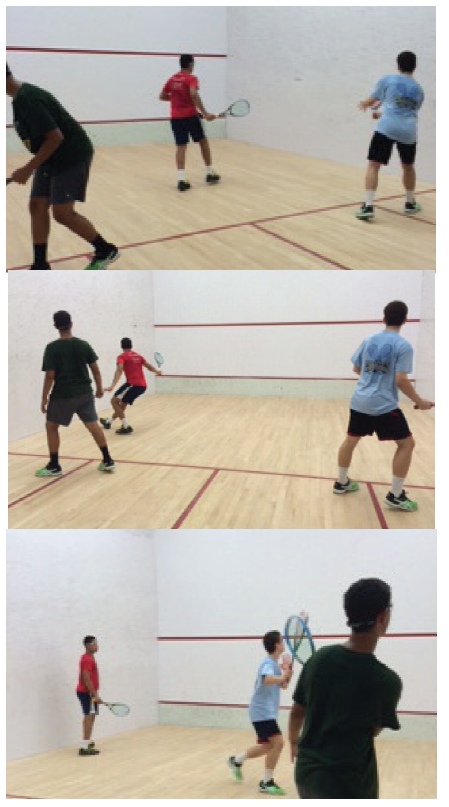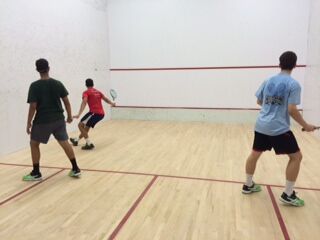By Richard Millman
If you are working on your game and you have a couple of friends who are just as enthusiastic, two-ball feed drills are a marvelous discipline to help move your game forward.
As the name suggests two balls are used, one on the right side and one on the left. One player is the worker, while the other two are the feeders.
There are multiple drills that can be done in this way, but before I describe them, here are some important rules that I apply with them.
1. The key to any repetitious drill is to use your imagination to visualize a real game situation. Make sure you move off of each shot as you hit it and stay mentally, physically and emotionally attached to the ball as you release the shot and then pretend that an opponent has hit the ball to the other side of the court. Then play your shot on the other side of the court (from the second feeder) with the same imagination in play.
2. Make sure everyone in the drill understands their roles and responsibilities.
a) The feeders ‘OWN’ the balls—in other words if the worker makes an error and a ball goes wayward, the worker doesn’t deviate from the rhythm of the drill. Instead the feeder is responsible for retrieving the ball and getting that ball back into the rhythm of the drill ASAP.
b) Everyone is a contributor to the drill. Feeders must constantly be moving in time with the drill (preferably recovering towards an imaginary recovery position) so that, as they strike each feed, their rhythmic body movement transfers their weight into the ball. Additionally, if the feeders are physically active, the whole team feels the energy on the court and the whole team will experience an ‘up-spiral’ in enthusiasm and performance. If the feeders are static, there will be a ‘down-spiral’ and decreased energy in the drill.
c) Rhythm is the key principle of two-ball feeding drills. Depending on whether the priority is quality, a mix of quality and pressure, or just pressure, fix on a particular cue to feed the ball—such as hearing the worker’s shot strike the front wall. Feed early but slowly (making the ball hang in the air) so that the worker has plenty of notice as to where the ball is going.
d) Make some noise! Encourage your teammates. Whether it’s just an enthusiastic ‘ Well done’ or ‘ You’ve got it,’ your encouragement really does heighten the performance of the whole group.
e) The worker counts his or her own shots. If you are doing 80 or 100 or 120, you count and let the feeders know when you are done. That way if you miss a shot you have a true count.
3. After you finish, have a discussion amongst the three of you and come up with some positive feedback on how you would like to improve. Write down your notes.

So those are my key principles for two-ball feeds. Now here is a selection of variations:
1. Drives—feed from behind the service boxes, gather the ball with your racquet.
2. Volleys—feed from the same place but make sure the ball passes the worker’s eye level and would land at your feet if the worker didn’t hit it.
3. Drop shots—the worker follows a ‘V’ shaped pattern from just in front of the middle of the court. The feeders hand feed the balls, standing about three or four feet from the front wall, on the side wall and feed the ball about two feet above the tin as they see the worker beginning to approach from the middle. The worker must not run directly to the ball but move to the side to set up a 90-degree angle of contact between approach and where they want the ball to go. Keep looking at the ball you just hit until you get to the middle and turn to the other side.
4. Drop Volleys—feeders stand just in front of the service box and feed a gentle feed around the worker’s eye level. Gather the ball with the racquet and racquet feed.
5. Asymmetric two-ball feeds—a great combination drill where you feed different shots on each side. Good combinations are one side drive, the other side volley; one side drop, the other side volley; one side volley, the other side deep back court retrieve (the feeder stands on the short line and feeds a hot ball into the back corner for the worker to retrieve). You can use any combination you like.
So there you have it! Two-ball feeds are a great way to train with three people. If you do two sets of 100 shots each following my advice above, you will find you get a terrific workout, improve and groove your movement and ball striking, and have fun.
So call up a couple of buddies and get a session set up.





